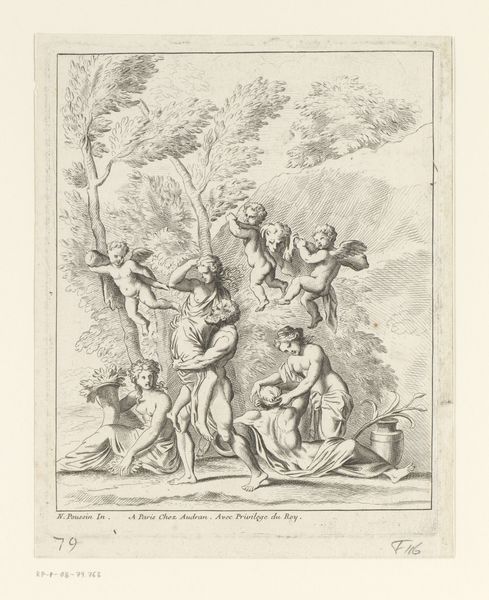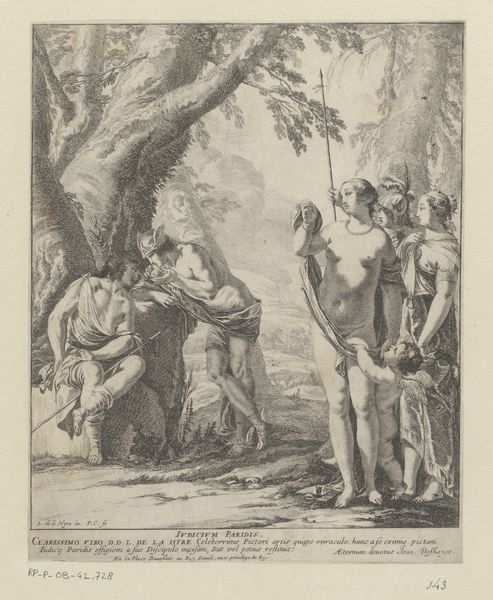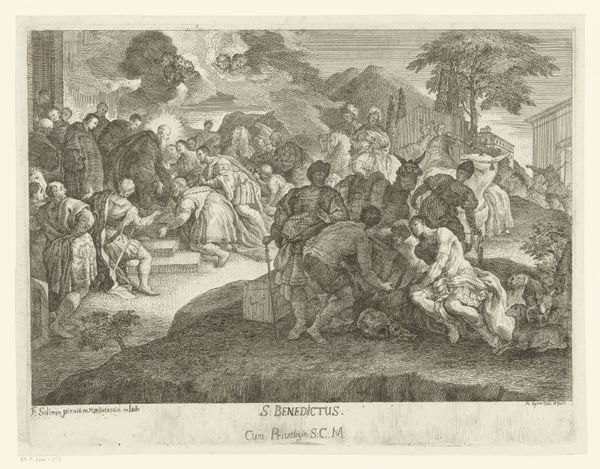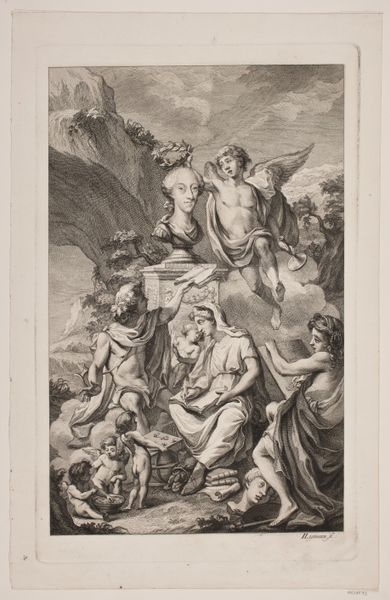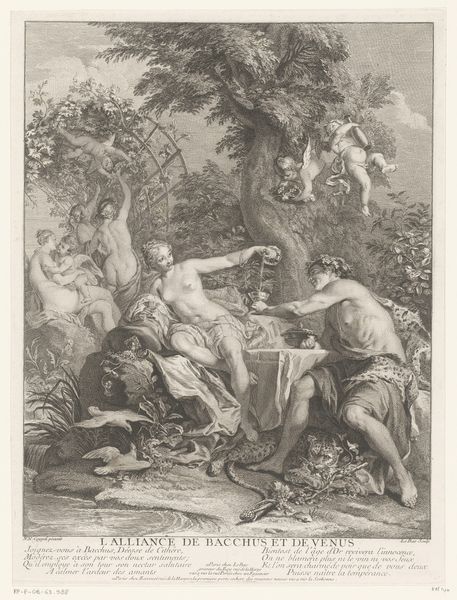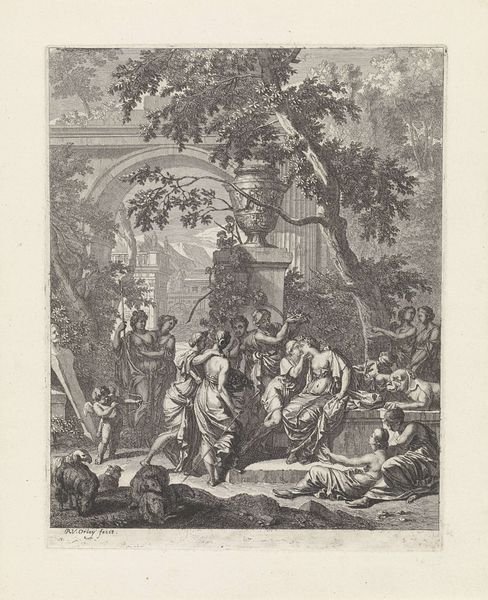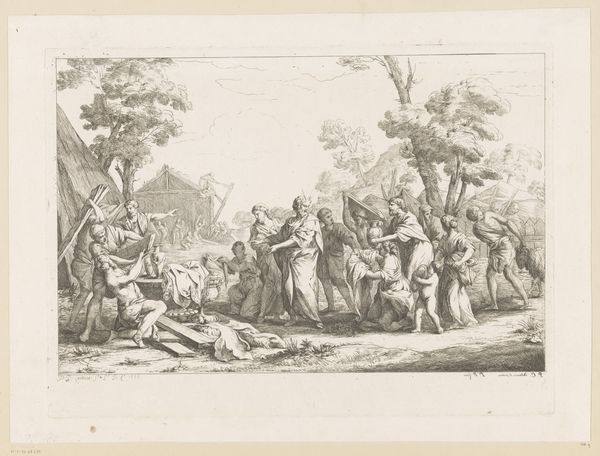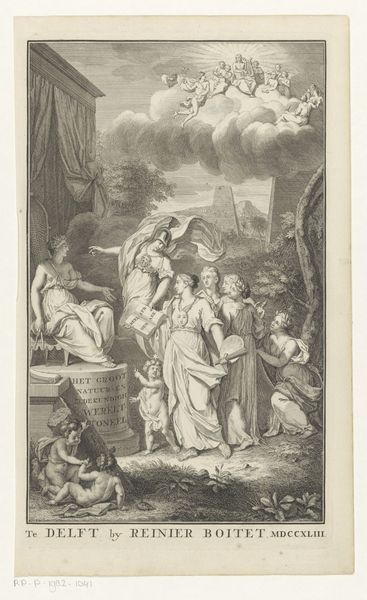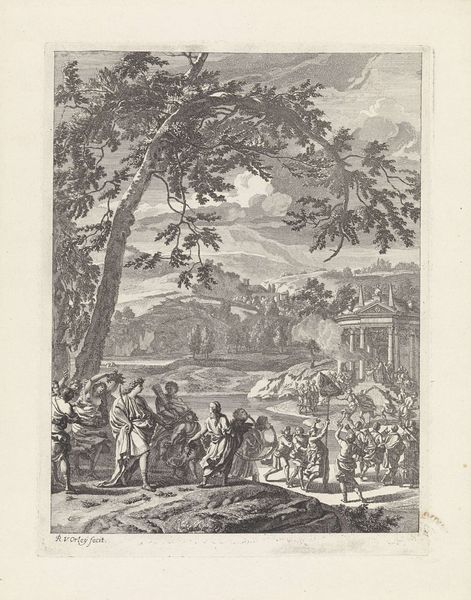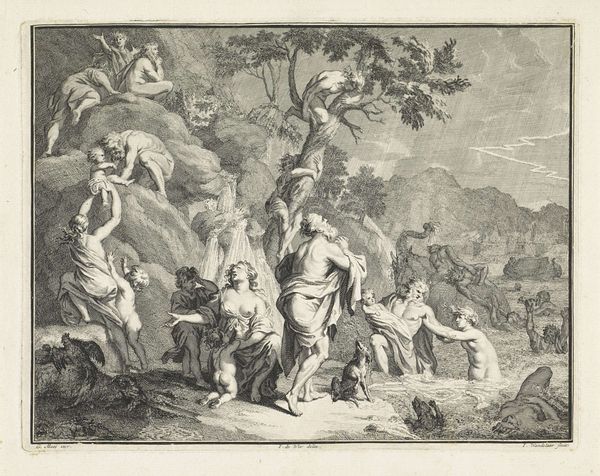
Saint John the Baptist preaching to a crowd 1724 - 1734
0:00
0:00
drawing, print, engraving
#
drawing
#
narrative-art
#
baroque
# print
#
figuration
#
line
#
history-painting
#
engraving
Dimensions: Plate: 16 15/16 × 13 9/16 in. (43 × 34.5 cm) Sheet: 20 7/8 × 15 3/16 in. (53.1 × 38.6 cm)
Copyright: Public Domain
Curator: Look at this engraving, "Saint John the Baptist preaching to a crowd", realized by Bernard Lepicié between 1724 and 1734. Editor: It’s quite detailed for an engraving! The mass of figures definitely strikes me. Curator: Indeed, notice Lepicié’s technique in rendering so many individual figures. We must also take note that it depicts John the Baptist, who would have preached a message of repentance, making him quite controversial during that time. Editor: Well, thinking about it from a material standpoint, this piece's function would be dissemination. Engravings allowed imagery, often of religious or political narratives, to spread rapidly and to a broad audience. What was the environment of printmaking and distribution in the 18th century that facilitated this kind of artistic distribution? Curator: The eighteenth century was an exciting moment as academies were solidified, as well as these new markets to show and trade art publicly. And this print would then circulate within these expanding social spheres as this time saw shifts in access, art criticism, and popular opinion on art. Editor: I wonder about the actual physical creation. Can you imagine the hours spent etching these lines? How does the material limitation of the engraving process impact the content depicted here, versus a painting in a richer palette, for example? It strikes me that line-based art-making requires the viewer to participate more. Curator: Right. And that makes me wonder: Who exactly *was* Lepicié targeting with these prints? Given the biblical scene, was this mainly geared toward religious institutions, or was the aim to broaden the appeal and tap into the growing commercial art market? Editor: I think the market demand would really dictate its long-term reception more so than intentions during the act of creation. Curator: That's something I'd agree with. It really sheds light on how even seemingly "simple" reproductive prints reflect complex socio-economic conditions of their era. Editor: Ultimately, appreciating the print as both art and commodity. It invites us to reflect on the intricate dance between artistic expression and broader consumption habits in that period.
Comments
No comments
Be the first to comment and join the conversation on the ultimate creative platform.

